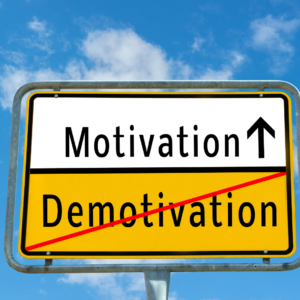How I won the lottery
Olivia Stewart
Olivia Stewart is heading off to the US after having won a green card by random chance.
Hot on the heels of a federal election, you are probably entitled to scoff at the idea of a government offering its constituents something for nothing – let alone to foreigners. Yet, every year, the most powerful nation on Earth does just that, offer non-citizens worldwide a free chance to win that most elusive and prized possession – the green card.
Formally the Alien Registration Card (you can see why it’s identified colloquially) allows foreign nationals to permanently live and work legally in the United States by obtaining an all-important social security number.
Getting one has become the stuff of lore – and entertainment.
We’ve watched and wondered at the desperate ploy of marrying an American (and the subsequent government grilling), in classic films such as the Peter Weir-directed Green Card, starring Frenchman Gerard Depardieu.
Why go to such extreme measures when 50,000 green cards annually go to randomly selected applicants with a high school education or two years of work experience, who have only had to submit a form and
photograph online?
If you have toyed with the idea of working in the US, what have you got to lose? Enter the green card lottery.
Anyone who has had a hotmail account or suffered internet pop-ups has probably been made aware of this random selection process.
Countless organisations advertise online that they can help you succeed in the lottery – for a charge, of course.
Yet the Diversity Visa – as it officially is known – is run by the US Department of State. It costs nothing to enter and everyone has an equal chance to win one. In fact, if you submit more than one application, you will be disqualified.
The program was established in 1990 to, as the name suggests, diversify the mix of immigrant nationalities by offering visas to countries with low-immigration rates.
The window of opportunity is a two-month period each year. Applications for the next quota (2009) close at 3am Brisbane time on Monday. It could be your last chance. Bills are passing through Congress seeking to abolish the scheme for reasons including the terrorist risk so there is no guarantee it will continue beyond this year.
I remember thinking when I filed my application in December 2006 that 2008 was so far away. Yet here I am less than a year later, green card in hand. I can use it right away. I do not have to already have a job when I arrive and, when I apply for one, I will be on equal footing with a
US citizen.
I have lived in the US before, spending a year as a high-school exchange student in Oregon. I came back a lot more patriotic and appreciating the uniqueness of our culture and character much more.
I have lived in Brisbane for 22 out of the past 24 years, and, as far as comfort, climate and lifestyle goes, I would like to stay here for the rest of my life.
As a self-supporting freelance journalist harbouring long-held television ambitions, I reckon my best bet at achieving my goal is going to a country with hundreds of TV channels and thousands of media outlets.
I’d first applied in 2003, encouraged that everyone I mentioned it to knew someone who’d won a green card. But it wasn’t to be for me that year, or the next.
It was third time lucky. Very lucky.
My application for 2008 was one of 6.4 million entries. Fortunately only a tiny percentage came from Australia’s region, Oceania, one of six apportioned a quota of the lottery visas.
Going on previous years, less than half the 684 numbers selected for Australia in the draw will ultimately be issued Diversity Visas.
There are few other options for obtaining an immigrant visa in a limited timeframe and most of those are reserved for the elite – those deemed “aliens of extraordinary ability” in the sciences, arts, education, business or athletics (the likes of Nobel prize winners, Hollywood actors, Broadway performers and sporting stars) or with immediate family (which only applies to the children under 21 of US citizens).
Other methods of entry require being sponsored, either by an employer or family member.
In my case, I was looking at a five-year wait even though my father is a naturalised US citizen. So, when five months after I entered the lottery, an envelope arrived from the Kentucky Consular Centre (surface mail via Sweden), my pulse quickened as I read: “Congratulations”.
As any lottery winner will tell you, having your lucky number come up is the easy part. It is a three-step process. Winning does not automatically mean you can go to the US, because applicants have to pass rigorous identity and background checks and be interviewed by US Consulate staff.
Filling out paperwork and delays in communication can combine for a nightmarish ride to green card glory.
For starters, I was only one of 100,000 applicants registered for further processing; the oversubscription allowing for those who do not qualify or pursue their case further.
When I contacted the KCC, I was advised that, since I had a low case number of 384, I stood a good chance of being successful if I met the documentary criteria.
This second stage includes filling out an application for Immigrant Visa and Alien Registration and two less-detailed forms.
Providing a photo taken within the past six months also proved testing. There are strict proportions and, unlike an Australian passport photo,
it is square.
When filling out the forms, I took the approach that it was worth completing each section as accurately and thoroughly as possible. With so many surplus applicants, I did not want to give them any reason to reject me and, even though it took me about three weeks to get everything researched and completed, all that preparation definitely paid off later in my interview.
The next batch of vital instructions and paperwork arrived less than four weeks before my scheduled interview – a real heart starter, considering I had to undergo a national police clearance and a full medical.
It was at this point I really started questioning how much I wanted the Green Card. I felt getting fingerprinted when I had not committed a crime was a violation of my civil liberties. The process also started costing me money – $146.70 for the police search, $242 for the medical, $99 for a chest x-ray, $91 for blood tests (none claimable through Medicare).
Having come this far, I was not about to throw the idea away. Seeing as even tourists now get fingerprinted entering the US, I figured I would just have to bite the bullet. When I later questioned Queensland Police’s section administrator about what happened to my fingerprints after the search was completed, I was told I could elect to have them destroyed or placed on the National Register, which otherwise happens by default.
I also had to bring to the police station my original birth certificate, all expired passports and proof of educational or employment history. I was relieved I had not been married or divorced, adopted or in the military, did not have children and had never been to court, as proof of those details also were required.I also had to supply another new photo.
By far the biggest worry, though, was the result of only being allowed to communicate with the Sydney US Consulate via email. I sent them an email asking if I could change my interview appointment time, due to work reasons, but the response I received was ambiguous. I was told I could nominate another month, then they would apply for a visa number and, if received, a new interview would be scheduled for me. What did that mean? I sent an email with a request for clarification.
An answer did not come by close of business the day before my interview was originally scheduled so I got my answer by default and a stressful race ensued to secure last-minute airline tickets to Sydney.
Despite my alarm at finding out when I arrived that I could not take my laptop into the consulate to continue working on a major deadline even though I had to wait between 90 minutes and two hours, the interview itself was remarkably simple and straightforward.
The only surprising question was whether I belonged to a terrorist group. All in order, I was told to go and pay at the cashier ($981.50 or $US755), then return with the receipt, before I would be called by the interviewing officer.
This final stage was miraculously quick. Within 10 minutes, I was called and asked when I planned to use my visa. I said within six months (because you have to).
I was asked to provide a fingerprint scan of each hand’s five fingers – until now it has only been two fingers but even tourists will soon have to provide 10 digit imprints.
What happened next was a complete shock after all the stress and detailed preparation. A simple: “Well, your application has been approved.”
Me: “What? That’s it? That’s awesome.”
“Your documents will be express-posted tomorrow.”
Although it is not a process for the faint-hearted, it has made me feel all the more rewarded for my efforts. Having the freedom to work in another country, without having to give up my Australian-ness, is the best of both worlds.
Green light to United States
*The official US entry site is at www.dvlottery.state.gov. Applicants must have a high school education or two years of training and work experience and submit a digital photo. Acknowledgment comes from the State Department once entries have been submitted.
* Submit only one entry or you will be disqualified.
* Entries for DV-2009 close at 3am Brisbane time on Monday.
* Successful entrants are notified in writing by the Kentucky Consular Centre around May-July 2008. This is the second stage of three. Detailed data about your work, educational and residential history is required, as well as previous travel to the US – be prepared to dig deep.
* Subscribe to the Visa Bulletin to check when your visa appointment will be scheduled. It is issued mid-month.
* Be prepared to act fast and to travel to Sydney at the date and time scheduled for you. Follow the instructions to the letter to ensure your best chance of success.
* Provide as much evidence as possible.
* Be aware your interview time will be the same as hordes of others. Expect to find yourself in a long queue to go through security (x-ray and metal detector) at reception. Once inside the consulate itself, you will take a number so be early.
* Travel light. Everything except your paperwork and a water bottle will have to be left with security. You can not take in mobile phones or laptops.
* There are no toilets inside the consulate. Worth knowing when not knowing how long it will take for your number to come up.
* Be ready to pay $US755 on the day. You can pay in Australian dollars ($981.50). This is a fixed rate, presently below the exchange rate.
* Be prepared to be fingerprinted electronically and to have that record stored for later confirmation of identity. If you refuse, your application will be rejected.
* If everything is in order, your application will be approved at your interview. Your passport and paperwork will be sent to you the next day in the Express Post bag you have provided. Remove all contents and read the instructions – do not open the envelope enclosed. You must carry it on you when you travel to the US and present it to the US Citizenship and Immigration Service officer.
Good luck!
The Courier-Mail


